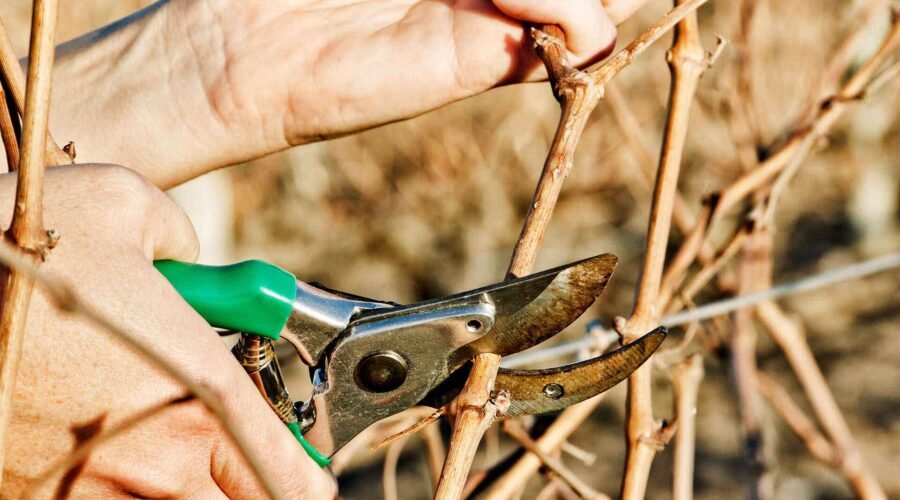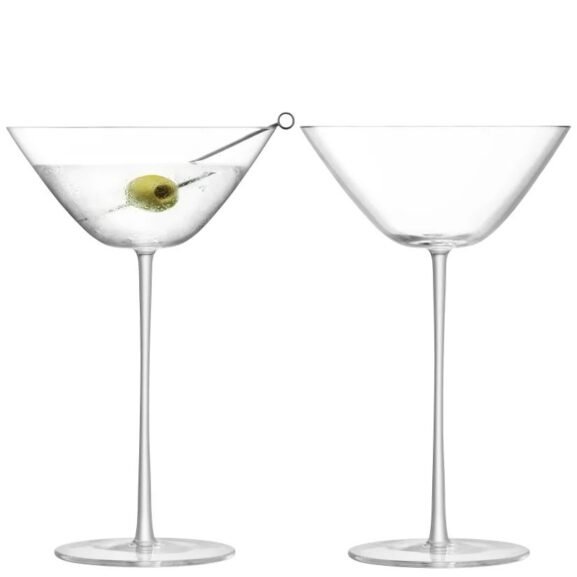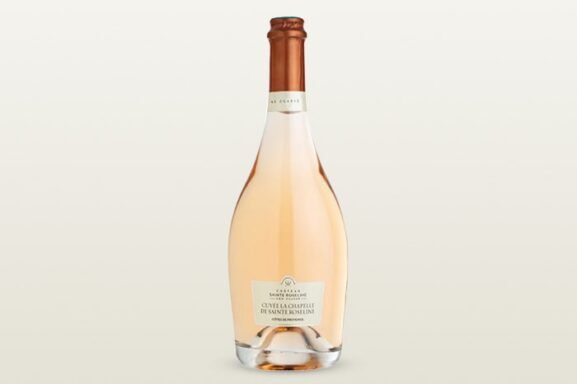Culture: Wine Growers Have a Pruning Problem—Here’s How Some Are Trying to Fix It
In 2019, Netanya Welch looked out at the neat rows of Pinot Noir spread across a steep slope on Eola Hill in Oregon’s Willamette Valley. She was shocked to see dead wood running down the trunks of the vines. The 20-year-old vines on Stone Creek Vineyard, one of the flagship plots of Rose & Arrow Estate Vineyards, were slowly succumbing to trunk disease.
Welch, Rose & Arrow’s then-newly hired director of viticulture, was determined to save them. “Yields had been going down and the vines had been mistreated,” she says. “We didn’t want to start replanting—we wanted them to recuperate.”
Welch was dismayed to see that previous vineyard teams had made large return cuts—large slashes to remove old branches and push vines back under the fruiting wire—on old wood. She believes that these large pruning cuts aren’t good for vines.
Starting in the 1960s and 1970s, when tractors were widely adopted by the industry, wine growers began to focus on fitting vines into tighter, easier-to-manage rows through pruning. To keep these natural climbers contained in their designated spaces, vineyard workers often make large return cuts. But 15 years later—when vines should be reaching their peak—grape yields often start to drop and, eventually, the vines are ripped out and replaced. Then the whole process begins anew.
Today, a growing number of viticulturists are moving away from return cuts and trying a new method of pruning that aims to ensure vines remain vital for decades to come.
A Rediscovered Method of Pruning
In 2019, Welch hired the master pruners at Simonit & Sirch to help revive her vines. The Italian-run team is on a mission to help viticulturists build healthier plants that can produce high-quality wines well into the next century. They use a method for pruning with ancient roots, which allows vines to gradually branch out in accordance with their natural tendencies.
After years of research in collaboration with the University of Bordeaux—which now offers a master’s degree in pruning—Simonit & Sirch developed a method based on four principles: Allow the plant to branch with age; occupy space with the trunk and branches; improve the vines’ lymphatic flow; and only make small cuts to improve sap flow and prevent dead wood.
Dead wood tends to form pyramid-shaped scar tissue inside the vines called “desiccation cones.” The goal of the Simonit & Sirch system is to keep desiccation cones as far away from the vines’ water and nutrient-carrying pathways as possible.
The Damage of Modern Pruning Techniques
Grape plants are lianas—woody vines rooted in the ground that climb trees and other structures in search of direct sunlight. If left to themselves, they would grow indefinitely, taking up massive amounts of space.
“Modern viticulture, which was born in the late 19th century following scientific progress and the necessity to effectively fight new diseases arriving from America, ignored the evolutionary process of the vine,” writes Attilio Scienza professor at the University of Milan’s Department of Agriculture in Simonit & Sirch’s Guyot Methodology. “From a plant with a free and uncontrolled shape, we moved to a hedge with a set development.”
As previously mentioned, the tractor prompted wine growers to focus on growing vines in a geometric form, making the vineyards simpler to manage and grapes easier to process. But this method of packing vines into neatly laid out rows runs counter to the vines’ natural growth patterns.
“After 15 to 20 years, we see a drop of performance in the vine, more viruses and lower yields. The plant is more sensitive to stress,” says Jacopo Miolo, a Napa-based master pruner for Simonit & Sirch. “We think about California’s drought. If we’re able to let the plant work in a more natural way and keep the vine healthier, it’s better to resist that kind of stress.”
Over time, vine planting has become even tighter, moving from 10-by-10-foot spacing more often to 10-by-six-foot. Pruning helps keep each plant within its desired space limits and produce fewer, but higher quality, grape clusters.
“[We do this] to keep vines in this space we prune, but we’ve seen that this pruning has consequences inside the plant,” says Miolo. “Every time we prune, the plant reacts to this by creating a desiccation cone.”
Unlike trees, vines aren’t good at compartmentalizing wounds. When you cut into a tree, the living tissues surrounding that wound seal it and protect the internal structure of the plant. On vines, the crown buds offer a similar protective mechanism that seals off the wounds and helps the plant to slowly heal. If those crown buds are not left in place—which is fairly common in modern pruning—a desiccation cone forms deep within the vine.
This is essentially scar tissue. Starting at the point of the cut, a cone of dead wood elbows into the living tissue of the vine. The bigger the cut, the larger the cone that interrupts the sap flow within the vine.
To reduce the impact of these wounds, Simonit & Sirch advocates for leaving crown buds in place to help the plant heal and keeping some spare wood above each cut, so that the resulting desiccation cone doesn’t cut into the vines’ vascular system.
Successful Changes
In the three years that Welch has been working with Simonit & Sirch, Stone Creek’s short shoots (a sign of excessive stress that can result in harsh tannins and astringent, herbaceous aromas) have reduced by 60%, bud counts have increased fourfold and pruning weights (a system that quantifies vine vigor through a process of weighing pruned wood in the winter) have doubled. As a result, grape yields have increased by 25%.
The progress has been a huge relief. “These old vines produce our best wines,” notes Welch.
She is far from the only Simonit & Sirch-method convert. The team has worked with some of the most esteemed vineyards on the planet, including Château Latour and Chateau d’Yquem in Bordeaux, Louis Roederer in Champagne, Stag’s Leap Wine Cellars in Napa and Rajat Parr’s Phelan Farms in Cambria, California.
Kirk Grace, the director of vineyard operations for Stag’s Leap Wine Cellars, also believes that Simonit & Sirch is onto something. “I wondered, could something so subtle make that big of a difference,” recalls Grace. “I’m beginning to think that’s quite possible—especially when it comes to the vines’ vascular system.”
He signed up to work with the team on all of Stag’s Leap’s blocks. This year, Grace and his team focused on making smaller cuts, farther away from the branches, toward just one side of the plant while leaving the crown buds in place. This not only attracts sap toward the new growth, but heals the wounds that result from the pruning cuts. It also helps to prevent trunk diseases, like Esca and Eutypa, from entering the vine.
In instances where Grace’s team felt the need to cut older canes (two-year-old wood) from the plant, they made their cuts higher up so that the desiccation cones would form on the spare wood, rather than in the structural branches of the vine. This helps the sap to flow freely through the plant.
Phil Coturri, who many consider to be the godfather of organic and biodynamic farming in the U.S., started working with Simonit & Sirch in 2019. While most of Simonit & Sirch’s concepts were aligned with his existing thinking, the one thing he’s had trouble understanding is seeing stubs of old dead wood left on his vines.
“No one is making clean cuts anymore and we’re leaving wood to die off, so it doesn’t dig into sap flow,” says Coturri. “I had to teach myself not to go through and clean up my guy’s cut.”
Coturri has always been serious about pruning—his workers usually train for five or six years before they are allowed to prune—but he now feels the subtle changes he’s implemented since working with Simonit & Sirch will help to keep his vines healthier longer. “It’s bringing our pruning to a higher level, which I always thought was A-plus before,” says Coturri. “So, now we’re at 110%.”
Welch and her vineyard team feel similarly. But most importantly, says Welch, “I can see that it’s working.”
Last Updated: July 19, 2023


